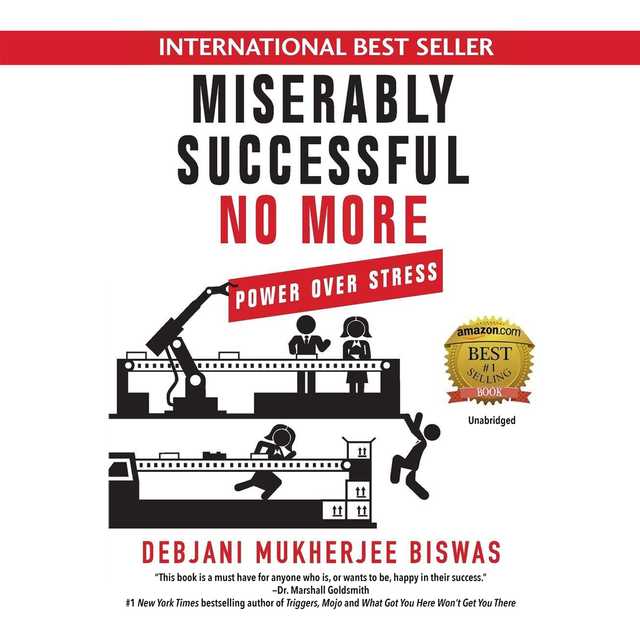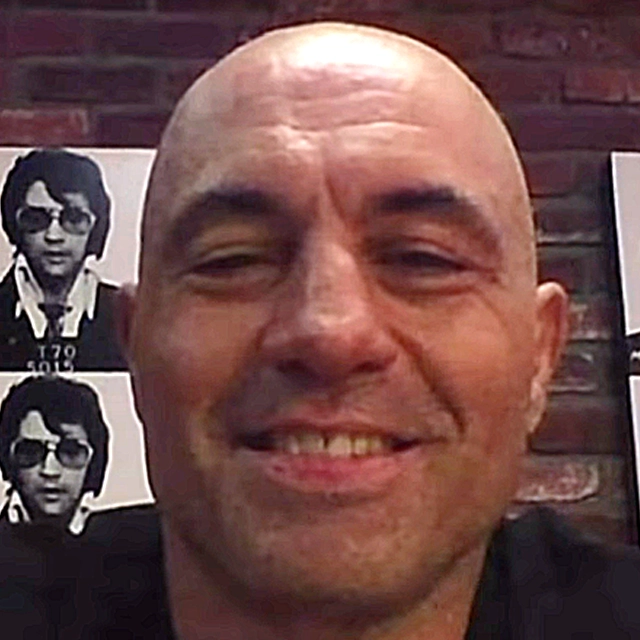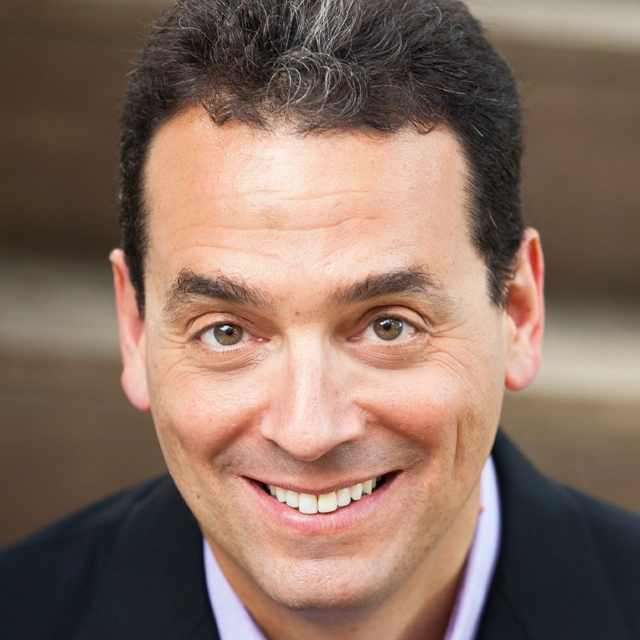The Perfectionists Audiobook Summary
The revered New York Times bestselling author traces the development of technology from the Industrial Age to the Digital Age to explore the single component crucial to advancement–precision–in a superb history that is both an homage and a warning for our future.
The rise of manufacturing could not have happened without an attention to precision. At the dawn of the Industrial Revolution in eighteenth-century England, standards of measurement were established, giving way to the development of machine tools–machines that make machines. Eventually, the application of precision tools and methods resulted in the creation and mass production of items from guns and glass to mirrors, lenses, and cameras–and eventually gave way to further breakthroughs, including gene splicing, microchips, and the Hadron Collider.
Simon Winchester takes us back to origins of the Industrial Age, to England where he introduces the scientific minds that helped usher in modern production: John Wilkinson, Henry Maudslay, Joseph Bramah, Jesse Ramsden, and Joseph Whitworth. It was Thomas Jefferson who later exported their discoveries to the fledgling United States, setting the nation on its course to become a manufacturing titan. Winchester moves forward through time, to today’s cutting-edge developments occurring around the world, from America to Western Europe to Asia.
As he introduces the minds and methods that have changed the modern world, Winchester explores fundamental questions. Why is precision important? What are the different tools we use to measure it? Who has invented and perfected it? Has the pursuit of the ultra-precise in so many facets of human life blinded us to other things of equal value, such as an appreciation for the age-old traditions of craftsmanship, art, and high culture? Are we missing something that reflects the world as it is, rather than the world as we think we would wish it to be? And can the precise and the natural co-exist in society?
Other Top Audiobooks
The Perfectionists Audiobook Narrator
Simon Winchester is the narrator of The Perfectionists audiobook that was written by Simon Winchester
About the Author(s) of The Perfectionists
Simon Winchester is the author of The Perfectionists
More From the Same
- Author : Simon Winchester
- Krakatoa
- The Men Who United the States
- The Man Who Loved China
- The Professor and The Madman
- A Crack in the Edge of the World
- Publisher : HarperAudio
- Abraham
- American Gods [TV Tie-In]
- Dead Ringer
- House of Sand and Fog
- Prey
The Perfectionists Full Details
| Narrator | Simon Winchester |
| Length | 11 hours 46 minutes |
| Author | Simon Winchester |
| Category | |
| Publisher | HarperAudio |
| Release date | May 08, 2018 |
| ISBN | 9780062848093 |
Subjects
The publisher of the The Perfectionists is HarperAudio. includes the following subjects: The BISAC Subject Code is Civilization, History
Additional info
The publisher of the The Perfectionists is HarperAudio. The imprint is HarperAudio. It is supplied by HarperAudio. The ISBN-13 is 9780062848093.
Global Availability
This book is only available in the United States.
Goodreads Reviews
Will
October 02, 2020
Before the imprecision of the natural world, all will falter, none shall survive—no matter how precise. But we will certainly give it our best shot. “Where did we come from?” is not only a religious question. It is also question of history. Simon Winchester is always a most welcome Virgil escorting us through the circles of historical knowledge, illuminating the unknown, or only slightly suspected, with the light of his explorer’s torch. We have trailed him on some of his many prior journeys. In Pacific, Atlantic, and Krakatoa, he looked at geographic places, some of the important events that have occurred there and how those events have affected the world. The Man Who Loved China may have focused on an individual, but its content had to do, again, with a place and how events that occurred there resonated forward. The Map That Changed the World and The Professor and the Madman concern themselves with particular steps in the growth of human knowledge. While having place as a factor, geographic place was not, per se, a focus. The Map concerned an inspiration to the understanding of Geology and The Professor and the Madman concerned the creation of the Oxford English Dictionary. The Perfectionists falls into this latter camp. Winchester looks at a select group of advances in the art of precision over the last several centuries, and shows how those advances impacted the world of their time, and helped create the one we live in now. It is a cornucopia of interesting historical and scientific detail and insight. One might say that The Perfectionists is comprised of diverse parts that have been finely milled to work perfectly together. I wouldn’t, but one might.Simon Winchester - image from The Berkshire EagleIt is not surprising that Winchester tilts toward things mechanical. His father was an engineer, who inspired his son with his love for the beauty of well-made things. More specifically, he was encouraged in pursuing the particular notion of this book by a fan who urged him to write about a subject that was hidden in plain sight, but was a cornerstone of civilization, precision, and so he did.The first Royce (before Rolls) – 1904 - image from Rolls Royce Enthusiasts ClubWinchester takes on a handful of specific tech/product areas, and examines where particular levels of advancement in precision have re-made them. These include clocks, the steam engine, machine tools, weapons (specifically cannons and rifles), automobiles, jet engines, lenses, GPS, locks and maybe most importantly, metrics themselves. Each trip down memory lane is fascinating and revelatory in its own way. There is a theme here that while precision is wonderful in hand-crafted products, it is the easy replicability of that precision that has allowed boutique technical upgrades to become world-spanning and revolutionary. The author allows for some sidetrips here and there to events and objects that were more narrowly focused.Henry Royce and Charles Rolls - image from AutomotiveHistory.comBut the title of the book is The Perfectionists not The Perfections. For each technological breakthrough Winchester examines, there is a person responsible for the work, some one individual who persisted, despite discouragement that often lasted for many years, holding to his core vision until reaching the Voila! of success. Of course, there were a few who seemed to come by their triumphs much more easily. We grudgingly recognize them with a fine, whatever. And, of course, others whose inspiration proved beneficial to mankind, but for which they received little or no reward. The strong personalities of the men described here shine through, for good or ill. Not all of them would make for pleasant company. A household-name inventor is revealed as a notorious con man. This cheerful sort is John Wilkinson - inventor of a boring machine (not that sort of boring) that is considered the first machine tool (or would that be Megatron?)There are core questions that underlie all our technology, queries we do not think about at all. But that is because someone, or many someones, thought of them long ago, and sought answers. For example, keeping proper time is at the core of pretty much everything. Even operations that focus on other physical measurements have time as part of the equation. How do we measure time? How long is a second, and who gets to decide? How can you know your timepiece is accurate, and what is the significance of that to determining where you are, during, say, the 18th century? How long is a meter? How was that core metric arrived at? What was measured, and what arbitrary decisions went into establishing what a meter is based on? What is the significance of flatness on industrial production? What is the importance of tolerance in manufacturing? How did the first notion of a GPS system come about? Sir Joseph Whitworth designed a method for manufacturing rifles to one-millionth of an inch accuracy. The Whitworth Rifle is considered the first sniper rifle. - image from ArtUK.orgThere is a fascinating chapter that compares and contrasts two Henrys, Ford and Royce, and follows their similar early lives, and subsequent diversion of approach to making the best automobiles they could. Winchester also looks at the development of the world’s most accurate lenses, (including those in orbit) and how their diverse limitations (and sometimes significant flaws) were addressed. He offers a chapter on the tools used for making modern computer chips. Another begins with the explosion, in flight, of a jet engine, and proceeds to look at not only the history of the jet engine, but how it is constructed, and how this one literally flew to pieces. And there are some lesser items as well, like an explanation for why New England rifles tended to be longer than rifles from elsewhere, and how Royce got Rolled, and what The Dark Side refers to in the development of technology. (No, Luke, not that.) Frank Whittle, an English pilot and engineer, patented a design for a turbojet engine in 1930 – image from WikipediaWinchester has a droll sense of humor, which is applied sparingly, but sometimes to great effect. In one instance, he describes a place being used for the testing of experimental jet engines [the engine] was taken by truck to the Gloster test airfield near the Cotswold village of Brockworth, a town better known today for its annual midsummer cheese-rolling contest, when drunken locals try to pursue a huge round cheese as it is set thundering down a local hill. I will now always associate jet engines with inebriated English townies chasing giant wheels of cheese over hill and dale. The chapter also includes a wonderfully dry report, by one of the principals, of staff involved in an experiment desperately fleeing for their lives as the engine in question, it is clear, is about to explode. ROFL material, well, for me, anyway. Roger Lee Easton (third from left) with astronauts Eugene Cernan, Ken Mattingly, Ronald Evans, Robert Crippen and Joseph Kerwin at the Naval Research Laboratory in 1975) is generally credited as the inventor of what is now called the GPS system – image from CollectSpace.comHe looks at the ever-increasing demands for precision in our increasingly high-tech tools, and what that means for actual human production of things. Luddites are mentioned, of course, as players in the Industrial Revolution. With the increasing automation of production, can the externalization of human labor that it entails generate another such movement?Gripes are few here. Mainly, I wished that there were more and better illustrations of the technical designs Winchester writes about. And occasionally there are passages that seemed a bit too geared for technical minds. The tools held on the slide rest can then be moved across the path of travel dictated by the leadscrew, thereby allowing the tools to make holes in the workpiece, or to chamfer it or (in due course, once milling had been invented, a process of related in the next chapter) mill it or otherwise shape it to the degree that the lathe operator demands. Ummmm…huh? Really, there are very few of these. Kintaro Hattori - the founder of Seiko revolutionized timekeeping with the introduction of the quartz watchYou will learn all sorts of things in The Perfectionists, and you will gain a much greater understanding of how the industrial revolution began, and advanced, an appreciation for some of the core concepts of manufacturing at a large scale, and a sense of wonder at how some of the magic that passes for science today actually works. You will also get to know some names that should be common knowledge, but have faded from familiarity with time. I am not sure that The Perfectionists will be snapped up by a broad readership. But for any with an interest in engineering, in the history of industrial and scientific advancement, and in the history of technology, it is nothing less than mother’s milk. James Clerk Maxwell - In 1870, this Scottish physicist proposed that standard measures be changed to being based on entirely new underlying, measurable and constant scientific truthsThe parts to his book have been perfectly measured, and fit together well within the allowable tolerance. If someone were to say that Simon Winchester has written a book that is educational, entertaining, and constitutes extremely well milled brain candy, there could be only one possible response. “Precisely.”Publication-----May 8, 2018 - Hardcover-----May 5, 2020 - Trade PaperbackReview posted – April 20, 2018=============================EXTRA STUFFLinks to the author’s personal, Twitter and FB pagesA nice overview of Winchester’s professional life can be found hereReviews of other Simon Winchester books we have read:-----Pacific-----The Man Who Loved China-----Atlantic-----Krakatoa: The Day the World Exploded-----The Map That Changed the World-----The Professor and the Madman Items of Interest----- February 7, 2020 - NY Times - Boeing Starliner Flight’s Flaws Show ‘Fundamental Problem,’ NASA Says - by Kenneth Chang - pointing out the dangers of increasing complexity-----August 18, 2020 - NY Times - America Has Two Feet. It’s About to Lose One of Them by Alanna Mitchell - Who knew?
HBalikov
June 12, 2018
Simon Winchester and I usually make a good pair. I like his topics and his narrative style. Truth be told, if I had real writer’s talent, I would love to have the freedom to roam the world writing about the fascinating things that our world contains and that people do. To that extent, I envy the author.Here, Winchester is discussing a matter dear to his heart, “how precision engineers created the modern world.” This is so because Winchester’s own father was one of this group.Words that are key to this book include “accuracy,” “precision,” and “tolerance.” In fact, a discussion of these terms precedes Winchester’s panorama of devices, which he puts in order of tolerance.I found that his joy and fascination drove this book, much to my delight. Each device and its significance was a teachable moment and I was an apt student.From the canon to the steam engine to Laser Interferometer Gravitational-Wave Observatory the stories behind the devices were eye-opening and entertaining.Winchester does a fine job of placing the engineering feats within a historical context. He doesn’t ignore the effects on culture and society, including the workers displaced by machines. In fact, he questions whether our ability to create precise devices demands manufacturing and inspection techniques that are beyond human skills.Finally, I learned about “flatness.” It is one of the most important concepts and I will leave it to you to discover why.PS: In finishing Winchester's book, one thought has been coalescing in my mind. If or when a massive catastrophic event affects our species, it is likely that all the centuries of work chronicled in this book will be lost or, at least, humankind will be stuck with many precision devices but not the people or the tools or the science to keep them working. To what level will we fall back?
Lois
January 09, 2023
Well. That was a trip.Specifically, through the making of our modern world that too many people take unthinkingly for granted, the creation of the ambit of the possible. The real changes, from which most political change so unknowingly flows.The structure, for this discursive but ultimately highly cohering narrative, is pretty brilliant. Winchester frames it upon the progression of precision from tenths of an inch through to measures that can only be expressed in scientific notation, from the start of the industrial revolution through to the Hubble and cesium clocks, stitching together the human roots and technological results. Causing me to reflect, not for the first time, that if you follow any technology or device, no matter how rarefied, far enough back through all the steps of its creation, you always arrive at the base of its mechanical family tree at fleshly human hands and eyes, moving and making. This books shows both.As the daughter of a safety engineer, and a long-time sci-tech reader, in a dim fannish way, there was from time to time happy recognition of some of the points and stories covered (such as the probable-cause investigations) at least enough to make me feel I wasn’t drowning; other parts were entirely new. Which reminds me also of my other reflection, that a good teacher makes you feel they’re smart, but a great teacher makes you feel you’re smart. There was some of this sense, but mostly of the feeling that I really need to go read more nonfiction. The pages-long bibliography in this is well worth a study.Also, it finally gave me the proper definition of the term “machine tool”, which I’d blipped over all my life. I hope that’s not the only takeaway – my memory is a sieve, and the book was dense – but still, gratifying.Highly recommended.Ta, L.
M(^-__-^)M_ken_M(^-__-^)M
January 16, 2023
Perhaps we should not be as surprised as the visitor to the American West in the middle of the century who remarked that “In Kentucky, in Indiana, in Illinois, in Missouri, and in every dell in Arkansas, and in cabins where there was not a chair to sit on, there was sure to be a Connecticut clockThe old saying goes its a pretty good day when your lucky enough to learn something new. Well definitely learnt a few new things days by the end of this book. GPS so common place now almost didn't happen. The military had been using it for 20 nearly years but it took a presidential edict from Ronald Reagan after the Korean airline tragedy 007 in 1983 pointing to faulty navigation to make it available for civilian use, adopted early by ocean going ships it was expensive bulky and large, airlines came next and when cost reduced significantly nearly everyone with a smart phone had access. In the 1990s the military tried again to wind GPS back but Clinton stopped that. China, Russia and European union have their own versions which is mostly used by the military. Exactly: How Precision Engineers Created the Modern World (Paperback) Simon Winchester precision is itself reaching some kind of limits, where dimensions can be neither made nor measured—not so much because humans are too limited in their faculties to do so but, rather, because as engineering reaches ever downward, the inherent properties of matter start to become impossibly ambiguous. The German theoretical physicist Werner Heisenberg, in helping in the 1920s to father the concepts of quantum mechanics, made discoveries and presented calculations that first suggested this might be true: that in dealing with the tiniest of particles, the tiniest of tolerances, the normal rules of precise measurement simply cease to apply. At near-and subatomic levels, solidity becomes merely a chimera; matter comes packaged as either waves or particles that are by themselves both indistinguishable and immeasurable and, even to the greatest talents, only vaguely comprehensible.”― Simon Winchester, The Perfectionists: How Precision Engineers Created the Modern World
Michael
March 15, 2019
The popular image of the industrial revolution is of titanic forces unleashed by steam, of dark satanic mills and choking clouds of smog. But the machines did not spring into being, fully formed. Behind our modern age lies an obsession with precision, with exactitude in measurement and cutting that a medieval master craftsman would find extremely odd, and which we find extremely normal. Winchester chronicles 250 years of precision engineering, starting with John "Iron-Mad" Wilkinson, a cannon manufacturer who armed the fleets that won Britain 100 years of empire, and who's technology, adopted in partnership with James Watt, created the first useful steam engine. Wilkinson's bores erred by no more than 1/10th of an inch, and in a few generations this would seem to be incredibly imprecise, as various engineers chased ever finer exactitude in manufacturing and measurement in the service of more reliable machines, economies of mass production, and eventually the atomic level precision of computer chips, GPS satellites, and LIGO, the gravity wave detecting observatory.Winchester blends a love of precision equipment, such as Rolls-Royce cars, his father's Jo blocks, mechanical watches, and Leica camera lenses, with an a charming professionalism as a writer, leaping through centuries, biographical sketches, and ever finer tolerances. This is as good as popular history of technology gets!
Gary
May 14, 2018
If I had noticed that this is the #1 best selling book in the science measurement category I might not have bought it. That is one oversight I am extremely grateful for, however. This is a very good book that is sure to surprise you and you don't have to be an engineer or scientist to appreciate it.Winchester is a modern polymath with a high level of curiosity, both scientific and philosophical. And that’s why he may be the only person with the expertise to have written this book.The author catalogues the advancement of technology from the Industrial Revolution to the Digital Revolution. (This is definitely NOT another book about the disruptors of Silicon Valley.) His examples are easy to follow and very informative. Except for the founders of Intel, he spends most of his time on inventers and engineers you probably haven’t heard of.And it works because in the end this is not so much a book about technology as it is a book about precision. Accuracy allows us to make nice things that last, but technological and scientific advancement require precision in both dimension and location. Engineering, in fact, outstripped precision quite early in the Industrial Age until people like John Wilkinson, Joseph Bramah, and Henry Maudslay came along and saw the problem.Philosophy enters the picture when Winchester notes the obvious duality between science and nature. Science requires precision. Nature abhors it. “For might there be in the wider world, in truth, simply too much precision? Might today’s singular devotion to mechanical exactitude be clouding a valued but very different component of the human condition, one that, as a result, is being allowed to vanish?”Precision allows computation. Imprecision, however, requires thought. Binary processors are very precise. Books, written in the human construct of language, are not. And that’s why I think it’s a shame that many people today are reading less. Computation without thought is not progress.Can we not also assume that precision takes money? The great scientific computers of today require the accuracy of atomic clocks rather than the simple quartz watch that most of us get by with. The meter wasn’t precise enough for the International Astronomical Union so they developed the Angstrom, a length equal to one ten-billionth of a meter, defined by the spectral wavelength emitted by heated cadmium.And who is going to pay for all of that precision? And what do we do with the people who don’t have access to it? Everything, including precision and technology, exists in context. We cannot blindly pursue the latter without understanding the implications for our social, educational, and economic institutions and systems.If we ignore it, nature will win. “Before the imprecision of the natural world, all will falter, none shall survive—no matter how precise.”
Howard
May 26, 2020
5 Stars for The Perfectionists: How Precision Engineers Created The Modern World (audiobook) by Simon Winchester read by the author. This is a must read for anybody that’s interested in engineering. Simon Winchester does an amazing job bringing this topic to life. I also really enjoy his narration.
Jamie
October 25, 2022
I might not have read this book if it had been written by someone else. The history of the quest for ever greater levels of industrial precision sounds interesting, but in the hands of some writers it would be a dull recitation of charts and tables. I have read two of Winchester’s other books, The Professor and the Madman and The Map that Changed the World, and I like his writing style. He was a journalist, and writes like one, knowing when to step back from math and machinery to emphasize the history and the people involved, and he never gets so deeply into the engineering details that the reader loses the thread of the narrative. An argument can be made that the first documented precision instrument was the Antikythera mechanism, dated variously to 178 or 204 BC. It is an assembly of finely made gears and cogs, some to a tolerance of one-tenth of a millimeter, and built to predict celestial phenomena. Whatever its merits as an engineering masterpiece, however, it cannot be considered a precision instrument, because modern reconstructions show it to be wildly inaccurate, up to 38 degrees out of true. For another two thousand years craftsmen would continue to make things like this: carefully and expertly, one at a time, and none of their parts interchangeable with others.The dawn of precision engineering in its modern sense has an agreed-up father and date, John Wilkinson in May of 1776. He had previously patented a process for making canons by casting them as a single, solid piece, and then boring out the tube. Previously they had been hollow-cast, which introduced a number of problems, such as the bore being out of true or having weak spots which could lead to an explosion when the cannon was fired.As Wilkinson was perfecting his process, James Watt was struggling to improve steam engines. One of the biggest problems was that the piston did not fit the cylinder very well, so a great deal of steam, and therefore power, was lost. He turned to Wilkinson, who bored a cylinder that fit Watt’s piston with a precision never seen before, leaving a gap of only one-tenth of an inch. From that moment the race was on to achieve ever greater levels of precision across all areas of industrial production.Each chapter of the book is built around a specific person or device, and as time moves forward, ever greater levels of precision are achieved. Some of these are well known, such as John Harrison’s invention of the marine chronometer, which in 1761 completed a 5000 mile sea voyage over 147 days with an error of only 1 minute 54.5 seconds. Modern consumer grade quartz clocks are only accurate to fifteen seconds a month, so over five months they might gain or lose 75 seconds, and thus the Harrison chronometer’s 115 seconds error, over two hundred sixty years ago, is still remarkably close close to modern standards. Dava Sobel’s book Longitude is an excellent recounting of Harrison and his amazing mechanical devices.Others incidents from the book are less well known, though they played important roles during their time. Sailing ships carried hundreds of pulley blocks to help manage sails and rigging, and they had previously been made one at a time by skilled craftsmen. During the Napoleonic era the Royal Navy expanded and needed one hundred thirty thousand of them every year, far outstripping the ability of the craftsmen to keep up with demand. Henry Maudslay, a mechanical genius who designed and built fine locks took on the task, and over six years created a series of machines that entirely automated the production process, producing one block a minute, which worked so well it was in use until 1965. However, the author also points out the social costs of automation; in this case over one hundred skilled craftsmen were replaced by ten unskilled laborers whose only jobs were to lubricate the machines and keep them fed with raw materials.Two very different automobiles are used to describe precision at the dawn of the twentieth century. First was the Rolls-Royce, lovingly crafted by artisans obsessively devoted to making every single part perfect. The machines were the wonders of their age, but each was a bespoke work of engineering artistry, and making parts interchangeable was not even a design consideration. If you could afford a Rolls, you could afford to have new parts hand-crafted to fit it. Henry Ford, on the other hand, built cars for the masses. He did not invent the factory assembly line, but he perfected its use. Not only did he sell over sixteen million Model Ts between 1908 and 1925, but as more and more production steps were automated he was able to lower the price almost every year, from $850 to $260 by the end of the model run. And every part on every car was designed to be interchangeable with other vehicles.The story moves on to the development of jet engines in the 1930s, and the author makes two points which I had never considered. First, a reciprocating engine has many moving parts: pistons, cams, valves, crankshaft, and many many more, hundreds in all. A turbine basically has one: the rotating shaft which compresses air between the rotor and stator blades before feeding it into the combustion chamber. Second, a piston engine’s power is constrained by the size and number of its pistons, which set an upper limit on how much air can be taken in and thus how much power is generated with each stroke, but a turbine’s intakes can be as large as needed; on a Boeing 777 engine they are over 9 feet wide.Aircraft play a large role in the next chapter as well, which focuses on the limits of our engineering abilities, using the example of Qantas Flight 32, a loaded Airbus 380 which experienced a catastrophic engine failure shortly after taking off from Singapore on November 4, 2010. With some expert piloting, and a bit of luck, the aircraft made it back with no loss of life. The post-accident investigation revealed the likely culprit: a tiny metal pipe five centimeters long and three-quarters of a centimeter in diameter which had developed a crack that burst, causing a fire inside the engine, resulting in one of the turbine blades breaking free. The part had been improperly manufactured: when it was being bored out it apparently slipped just a tiny amount in its fixture, causing one side to be machined half a millimeter thinner than the other; this caused an imbalance of stresses which led to metal fatigue, which led to the failure. The post accident investigation revealed similarly defective parts on dozens of other aircraft. The question that gets raised, then, is when do we lose human oversight of engineering precision, and have to place our trust in machines which have themselves been designed and are operated by humans who may incapable of recognizing when things go wrong?The book next discusses cameras and moves on to the quest for ever more precise ways to tell time, resulting in the development of GPS, which can be used to locate one’s position to within a few feet anywhere on the earth that satellites are visible from. The American GPS system uses thirty-one satellites, but it is no longer the only one. The EU has created its own, called Galileo; the Russians have GLONASS, and the Chinese Beidou. A company called Coros sells smartwatches that can connect simultaneously to the American, Russian, and Chinese systems, allowing wearers to find their position to within centimeters.The book moves on to computers, telling the story of the invention of the transistor and the development of the integrated circuit. The first IC was the the Intel 4004, released in November 1971 as part of a calculator for a Japanese company, and was advertised as having the same processing power as the room-sized Eniac computers of the 1940s. The processing core of the 4004 was a tiny sliver of silicon twelve millimeters wide and containing 2300 transistors spaced ten microns apart. By 1985, with the Intel 80386, the circuit spacing had shrunk to one micron and the chip had more than a million transistors. Today there are chips using 5 nanometer processes, containing billions of transistors with a density of one hundred million per square millimeter; each transistor only about one hundred atoms thick.In Washington State and Louisiana are Laser Interferometer Gravitational-Wave Observatories, built to detect the gravity waves which Einstein had predicted, and they have successfully done so on several occasions. The precision required to do this is mind-boggling:The test masses on the LIGO devices...are so exact in their making that the light reflected by them can be measured to one ten-thousandth of the diameter of a proton. They can also compute with great precision the distance between this planet and our neighbor star Alpha Centauri A, which lies 4.3 light-years away. The distance in miles of 4.3 light-years is 26 trillion miles, or, in full, 26,000,000,000,000 miles. It is now known with absolute certainty that the cylindrical masses on LIGO can help to measure that vast distance to within the width of a single human hair.And finally, the author visits a Seiko factory in Japan and waxes euphoric over the handmade Grand Seiko mechanical watches. I respect the precision and care that go into making them – each craftsman produces only two a day, but when I looked them up on the internet I didn’t think they were particularly attractive and they go for $6800 each. I’ll stick with my Apple Watch.Simon Winchester has an engaging writing style, and is never dull. The examples he uses in this book to describe ever greater advances in precision are interesting and informative, illuminating how the modern world has undergone unimaginable changes in just a few centuries. There is a lot to learn here, and a lot to think about, so I recommend this book for anyone with an interest in science and society.
Edward
September 02, 2019
Reading this book could turn you into a nervous wreck. When, for example, you step on a plane and consider the incredibly hot temperatures of the turbine engines, so hot that the entire plane and all of its passengers would melt down into a molten puddle, were it not for thousands of tiny cooling holes in the blades. Any one of which, even infinitesimally out of sync, would mean disaster. Fortunately, we don’t think of such matters, we just take for granted that thousands of intricate parts will work perfectly together and get us where we want to go. Winchester in this fascinating book explains how many other modern inventions that make our world what it is today work. Because of our casual familiarity, we are incurious about them, but what Winchester does is make them interesting in almost wondrous ways. His approach is an historical one, starting with the invention of the steam engine and the advent of the Industrial revolution which shapes modern history in every conceivable way. The steam engine was successful only because of decreasing space between moving parts, what is called tolerance. Precise measurements, originally not easy to create, were necessary to fully enclose the power of steam, and keep it from escaping. From here, he goes to weaponry, clocks and timepieces, the development of the automobile, the airplane, space travel, all of which depend upon the development of micro technology. It’s also given us radio, telephones, motion pictures, television computers, cell phones, the gps, and more devices than we can even think of. One absolutely essential key to all of these developments is to have precision measurements and the machinery and equipment to be able to replicate, exactly, the same precision in multiple copies, all of which make mass production possible. Incredibly, human error is absolutely minimized by tools which do the measuring and creation of these instruments on which we depend. Yes, accidents do occur, but they are extremely rare and are due to human actions which interfere with the technically perfect instruments of creation. Much of the last chapters are devoted to what could be called miniaturization, tolerances that become incredibly fine, in the millionths of millionths of inches to the point of atomic structure. Is there a limit to this process? Probably, but it hasn't been reached yet, and it’s what enables, for example, our cell phones to handle ever increasing amounts of processing capability. Are there any problems with precision engineering? Winchester writes, “Philosophically, morally, psychologically, intellectually and – dare one say it - spiritually there are troubling aspects to humankind’s ever-greater reliance on devices and techniques of ever-enhanced precision.” About these concerns, I wish Winchester would have said more, but the problem might be that we don’t know what is going to be the downside of all of these “improvements”. A loss of intimacy, irrelevance of traditional forms of government, a paralysis in a breakdown due to war or an ecological disaster? We don’t know. All of this, though, may be outside the scope of Winchester’s marvelously descriptive book.
John
August 19, 2018
I like Simon Winchester's works. He narrated this audio CD, as only the author of the work can. I enjoyed his research, prose and velvet hammer like reading during August 2018. “The Perfectionists” reels the reader in, making us think more deeply about our everyday lives, and the hardware that makes it possible. The science, the drive, the sheer sweat and toil of a few noted and countless forgotten people that have fashioned this successful society makes for an easy-to-relate-to journey.One lesson I see reinforced throughout is that the power of perfection, and only perfect precision, will achieve the stated goal. This standard is driven home with examples of mistakes, both small and mighty. Human error is a relentless weak link.This vaunted society of ours, with globe girdling technology at our fingertips, (like writing this book review on the World Wide Web) has drilled down to lots of small things. Printed inside Apple’s 2017 model A11 Bionic chip there are 4,300,000,000 transistors. I recall being excited when a birthday gift AM radio had seven.Winchester offers effective nonfiction portrayed with accurate wordsmithing.
Aaron
December 20, 2020
A 5 star above all other 5 star ratings. This book has entered my “Mt Rushmore” of favorite books. It was so incredibly enjoyable and insightful.
Lori L
May 09, 2018
The Perfectionists: How Precision Engineers Created the Modern World by Simon Winchester is a very highly recommended examination of the history, science, and work of precision engineers along with biographical sketches of some of the influential engineers that helped develop technology to take us from the Industrial Age to the Digital Age.The early attention to precision, accuracy, and degrees of tolerance ushered in the the Industrial Revolution, Scientific Revolution, and the Technological Revolution. What truly changed the way things were made was the creation of a machine tool - a machine to make a machine - along with standardized measurements. This allowed exact, multiple items to be made that worked identically in the machine application they were made for, thus ushering in the industrial revolution and assembly lines. All these machined parts must be potentially interchangeable one for any other. This potential for interchangeable parts requires precision in many areas: mass, density, hardness, temperature tolerance, length, height, depth, and width; measurable degrees of straightness, flatness, circularity, cylindricity, perpendicularity, symmetry, parallelism, and position - and there is even more to consider.The man who can be said to be the father of precision and the Industrial Revolution is John “Iron Mad” Wilkinson. Some of the others whose contributions are covered are: Henry Maudslay, Joseph Bramah, Jesse Ramsden, Joseph Whitworth, James Clerk Maxwell, Prince Albert, Honoré Blanc, Eli Whitney, Henry Whittle, Henry Ford, Roger Lee Easton, Kintaro Hattori, and Thomas Jefferson, who saw the potential of machine tools and brought the idea to the USA, introducing the concepts that would allow manufacturing to take off.Those who have read other nonfiction by Winchester (Krakatoa, The Map That Changed the World, The Professor and the Madman, Pacific, Atlantic, etc.) will appreciate this new educational and entertaining work that includes great stories along with scientific insight and his consistent attention to detail. As is expected, The Perfectionists is extremely well-written. Winchester takes a subject that, well, could be considered dull, and might be in lesser hands, but he makes it a compelling, engrossing subject, entertaining while giving us the history and the innovations. This is written for average people, not necessarily engineers (although engineers will appreciate it), which means even I could follow along and understand the scientific importance. The Perfectionists includes Illustrations, a Glossary, Bibliography and an Index.Disclosure: My review copy was courtesy of HarperCollins.http://www.shetreadssoftly.com/2018/0...
Sharlene
March 10, 2019
The topic - precision engineering - isn’t something that immediately draws me in. But having read Winchester’s books before, I know them to be well-written and thoroughly researched. And when I listened to the sample of the first pages, which he reads, I was drawn in to the story because he began with how his father used to work as an engineer in a factory and one day brought home some machined metal tiles called gauge blocks used for measuring things. And I liked how Winchester talked fondly about visiting his father in the factory and watching the machines and how Winchester started writing this book about precision. 🛠And in the end, this book was full of fascinating insights into the world of precision - from cars to guns to airplane engines. It’s not easy to make notes while listening to an audiobook and part of me wishes I had had a printed copy alongside but I quite liked that Winchester, in his sore-throaty voice, read the book himself. 🛠The Perfectionists is full of facts and insights that I had never thought to think about, all these big and small things that make our world go round, that enables me to type this sentence out on my phone, for eg. How our world has changed so much in what is just a few decades. You don’t have to love science or engineering to read or listen to this fascinating book. You just need a little bit of curiosity about how this world is as it is today.
Most Popular Audiobooks
Frequently asked questions
Listening to audiobooks not only easy, it is also very convenient. You can listen to audiobooks on almost every device. From your laptop to your smart phone or even a smart speaker like Apple HomePod or even Alexa. Here’s how you can get started listening to audiobooks.
- 1. Download your favorite audiobook app such as Speechify.
- 2. Sign up for an account.
- 3. Browse the library for the best audiobooks and select the first one for free
- 4. Download the audiobook file to your device
- 5. Open the Speechify audiobook app and select the audiobook you want to listen to.
- 6. Adjust the playback speed and other settings to your preference.
- 7. Press play and enjoy!
While you can listen to the bestsellers on almost any device, and preferences may vary, generally smart phones are offer the most convenience factor. You could be working out, grocery shopping, or even watching your dog in the dog park on a Saturday morning.
However, most audiobook apps work across multiple devices so you can pick up that riveting new Stephen King book you started at the dog park, back on your laptop when you get back home.
Speechify is one of the best apps for audiobooks. The pricing structure is the most competitive in the market and the app is easy to use. It features the best sellers and award winning authors. Listen to your favorite books or discover new ones and listen to real voice actors read to you. Getting started is easy, the first book is free.
Research showcasing the brain health benefits of reading on a regular basis is wide-ranging and undeniable. However, research comparing the benefits of reading vs listening is much more sparse. According to professor of psychology and author Dr. Kristen Willeumier, though, there is good reason to believe that the reading experience provided by audiobooks offers many of the same brain benefits as reading a physical book.
Audiobooks are recordings of books that are read aloud by a professional voice actor. The recordings are typically available for purchase and download in digital formats such as MP3, WMA, or AAC. They can also be streamed from online services like Speechify, Audible, AppleBooks, or Spotify.
You simply download the app onto your smart phone, create your account, and in Speechify, you can choose your first book, from our vast library of best-sellers and classics, to read for free.
Audiobooks, like real books can add up over time. Here’s where you can listen to audiobooks for free. Speechify let’s you read your first best seller for free. Apart from that, we have a vast selection of free audiobooks that you can enjoy. Get the same rich experience no matter if the book was free or not.
It depends. Yes, there are free audiobooks and paid audiobooks. Speechify offers a blend of both!
It varies. The easiest way depends on a few things. The app and service you use, which device, and platform. Speechify is the easiest way to listen to audiobooks. Downloading the app is quick. It is not a large app and does not eat up space on your iPhone or Android device.
Listening to audiobooks on your smart phone, with Speechify, is the easiest way to listen to audiobooks.






























